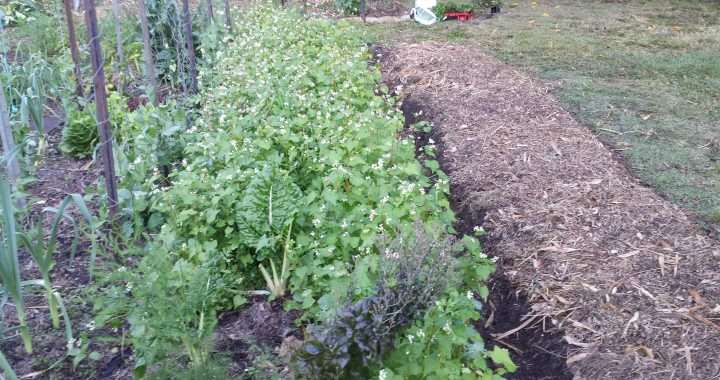
Green manure crops – growing tips for your organic garden
Author : My Food Garden
Green manure crops are grown specifically for soil health in your organic garden, rather than grown to eat. This may seem like an unnecessary interruption for most food gardeners. The question is, how committed are you to sustainable soil fertility?
My blog this week gives you tips on working with green manure crops. Its a surprisingly easy no-dig soil fertility process to integrate into your organic garden yearly rhythm. You can also look at a movie I did a few years ago on the full process of using green manure crops in a vegetable garden.
Green manure is an unusual term. It is a crop grown in your garden that you cut down at a certain stage and let all the organic substance and minerals from the crop go back into the soil. The crop is effectively “manuring” or fertilising the soil, adding all its life back to the soil. Thus it is called green manure. The use of green manure crops in a rotation has long been a practice of sustainable organic farming. Some farmers may call it cover cropping.
Here are some key tips on using green manure crops:
- Prepare your beds – Clear the beds of mulch and all plants that are not productive, then rake the beds so they are smooth. Wet the beds.
- Preparing the seed – Get a small bucket and put a handful of seed into the bucket, water, a small amount of garden lime and the seeds (if you are using a legume then also add the inoculant which you will receive with the seed as this helps the plants to draw more nitrogen into the soil). Stir the mixture into a slurry. Be generous with the amount of seed.
- Planting the seed – Throw the seed over the bed in small handfuls so you eventually cover all the whole bed and then use your rake to cover the seed. This will help it to set and reduce the potential for birds to see and eat it. Plant in the afternoon and use the right crops for the season. If you work with planetary rhythms, then plant it on a root day (earth sign) as this will help it to set well.
- See it grow – If you plant at the right time of the year, the crops will start coming up in 3-4 days. Keep it watered evenly but don’t over water the crop. The crop will take about six weeks to reach a point where it is ready to be cut down, but this length of time depends on the variability of your climate during that time. The key is to not let the crop seed.
- Don’t let it seed – If you have planted a mixture of legumes and grains, the legumes will normally take longer to flower. Its important to not let plants go from flowering into seed forming. With the grains, cut flowers off the stalks to let them grow more (a bit fiddly for a large patch) and then when the legumes have flowered, cut it all down.
- Cutting it down – When it has reached its full height and is not seeding, cut it down to the ground. If it is a small bed, use shears. If it is a large space, use a mower. Place all the green matter back on the bed and put a layer of mulch over the top to keep the light off it. Do not turn the plants into the soil as this disturbs the root zone which you want to break down into the soil. So this is a no-dig process. Avoid using newspaper or cardboard for mulch as this introduces chemicals into the soil.
- When to use the bed – Leave the bed for about a month and don’t dig up the crop, let it rot in the bed. It should not grow back because you have not let it seed and you will end up with soil which is full of organic substance, life and minerals, now ready to help you produce an excellent crop of food. After a month, make space in the mulch and begin planting.
- Last but not least – The living green manure crop looks great and adds beauty to your garden whilst you are fertilising it with a living process.
The time frame from planting the green manure crop and the bed being ready for the next crop is 10 weeks, not much time in your garden year. I find that summer in my sub-tropical climate is often a good time to work with green manure as it is a bit hot to be working in the garden and when the beds are ready after the green manure, it’s Autumn which is a great time in our climate for lots of crops.
We discuss green manure crops at our Workshops or talk to us about our Coaching service.
Authored by Peter Kearney

